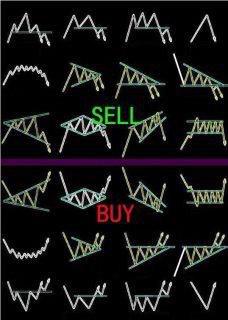
Bullish & Bearish Chart Patterns


Control is the ultimate goal. Getting control is, in my eyes, a 6 step process: |
China Market cap increased by about 1.5 trillion dollars in last 1 month which is same as entire Indian Stock Market Mkt Cap.
— Anirudh Sethi (@anirudhsethi71) May 23, 2015




Here is a list of the ten most powerful quotes from Jesse Livermore’s book “How to Trade in Stocks.” Livermore was one of the greatest stock market operators of our time and his quotes stand the test of time. No one made more money in the markets or came back from more bankruptcies than Jesse Livermore. He successfully shorted the Great Depression crash for one of the biggest trading wins in history. While his weakness was not managing his risk of ruin his strength was he could become a millionaire trading during a trending market over and over starting with a small stake. While in the end he decided to take his own life he lived his life as the world’s greatest trader for half a century.
“Do not anticipate and move without market confirmation—being a little late in your trade is your insurance that you are right or wrong.” -Jesse Livermore
“The good speculators always wait and have patience, waiting for the market to confirm their judgment.” -Jesse Livermore
“{Limit} interest in too many stocks at one time. It is much easier to watch a few than many.” -Jesse Livermore
“Experience has proved to me that the real money made in speculating has been: “IN COMMITMENTS IN A STOCK OR COMMODITY SHOWING A PROFIT RIGHT FROM THE START. ” -Jesse Livermore
“As long as a stock is acting right, and the market is right, do not be in a hurry to take a profit. You know you are right, because if you were not, you would have no profit at all. Let it ride and ride along with it. It may grow into a very large profit, and as long as the “action of the market does not give you any cause to worry,” have the courage of your convictions and stay with it.” -Jesse Livermore
“It is foolhardy to make a second trade, if your first trade shows you a loss. ” “Never average losses. ” Let that thought be written indelibly upon your mind.” -Jesse Livermore
“One should never sell a stock, because it seems high-priced.” -Jesse Livermore
“Profits always take care of themselves but losses never do. ” The speculator has to insure himself against considerable losses by taking the first small loss. In so doing, he keeps his account in order so that at some future time, when he has a constructive idea, he will be in a position to go into another deal, taking on the same amount of stock as he had when he was wrong.” -Jesse Livermore
“It is significant that a large part of a market movement occurs in the last forty-eight hours of a play, and that is the most important time to be in it.” -Jesse Livermore
“A speculator should make it a rule each time he closes out a successful deal to take one-half of his profits and lock this sum up in a safe deposit box. The only money that is ever taken out of Wall Street by speculators is the money they draw out of their accounts after closing a successful deal.” -Jesse Livermore
Link to Jesse Livermore’s Book “How to Trade in Stocks”

 I’ve always been a fan of Mark Douglas’ work, as my copy of his initial book on trading psychology, The Disciplined Trader, is thoroughly marked up thanks to Douglas’ many innovative ideas about mastering the internal challenges we all face with trading. His newest book, Trading in the Zone, is full of more great insights. I recently finished reading his excellent follow-up work, and it sparked my review of key points I take out of Douglas’ ground-breaking insights:
I’ve always been a fan of Mark Douglas’ work, as my copy of his initial book on trading psychology, The Disciplined Trader, is thoroughly marked up thanks to Douglas’ many innovative ideas about mastering the internal challenges we all face with trading. His newest book, Trading in the Zone, is full of more great insights. I recently finished reading his excellent follow-up work, and it sparked my review of key points I take out of Douglas’ ground-breaking insights:
1) Develop consistency. Douglas focuses on how we can create a mindset of consistency by developing beliefs which support us in obtaining this result. In order to develop consistency, Douglas emphasizes beliefs such as objectively identifying your edges, defining the risk in each trade in advance, accepting the risk to be able to exit a position when a defined loss level is realized, and many other key mindsets that help traders work through the issues they face in taking a trade, making the trade and executing their exit from the trade.
2) Trading is a probability game. You can’t be a perfectionist and expect to be a great trader. Your losses (that you hope will return to breakeven) will kill you.
3) Jumping in too soon or getting in too late. These mistakes come from traders not having a well-defined plan of how they will enter the market. This positions the trader as a reactive trader instead of a proactive trader, which increase the level of emotion the trader will feel in reacting to market movements. A written plan helps make a trader more systematic and objective, and reduces the risk that emotions will cause the trader to deviate from his plan.
4) Not taking profits on winners and letting winners turn to losers. Again this is a function of not having a properly thought-out plan. Entries are easy but exits are hard. You must have a plan for how you will exit the market, both on your winners and your losers. Then your job as a trader becomes to execute your plan precisely.
5) Great traders don’t place their own expectations on to the market’s behavior. Poor traders expect the market to give them something. When conditions change, a smart trader will recognize that, and take what the market gives.
6) Emotional pain comes from expectations not being realized. When you expect something, and it doesn’t deliver as expected, what occurs? Disappointment. By not having expectations of the market, you are not setting yourself up for this inner turmoil. Douglas states that the market doesn’t generate pain or pleasure inherently; the market only generates upticks and downticks. It is how we perceive and respond to these upticks and downticks that determine how we feel. This perception and feeling is a function of our beliefs. If you’re still feeling pain when taking a loss according to your plan, you are still experiencing a belief that your loss is somehow a negative reflection on you personally.
7) The Four Major Fears – fear of losing money, being wrong, missing out, leaving money on the table. All of these fears result from thinking you know what will happen next. Your trading plan must approach trading as a probabilities game, where you know in advance you will win some and lose some, but that the odds will be in your favor over time. If you approach trading thinking that you can’t take a loss, then take three losses in a row (which is to be expected in most trading methods), you will be emotionally devastated and will give up on your plan.